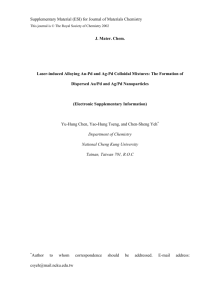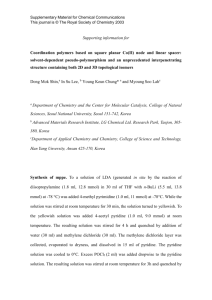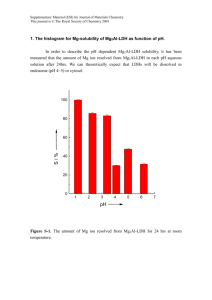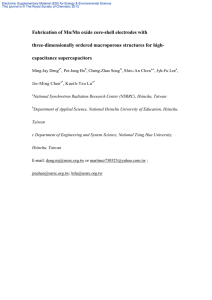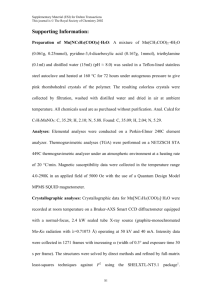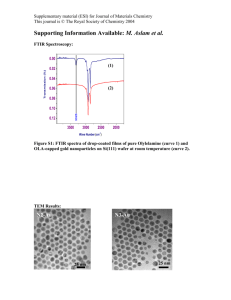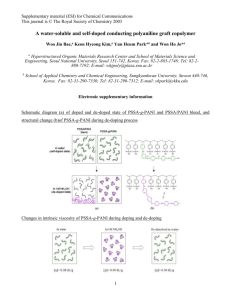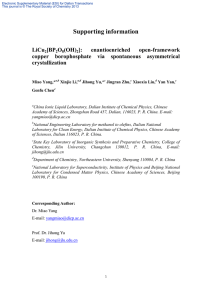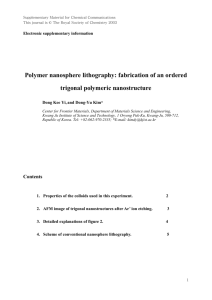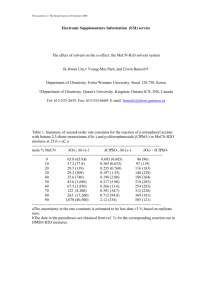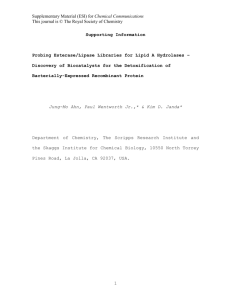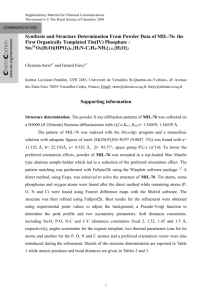Structure of the AAA stacked pyridine phase, asymmetric unit of 1
advertisement
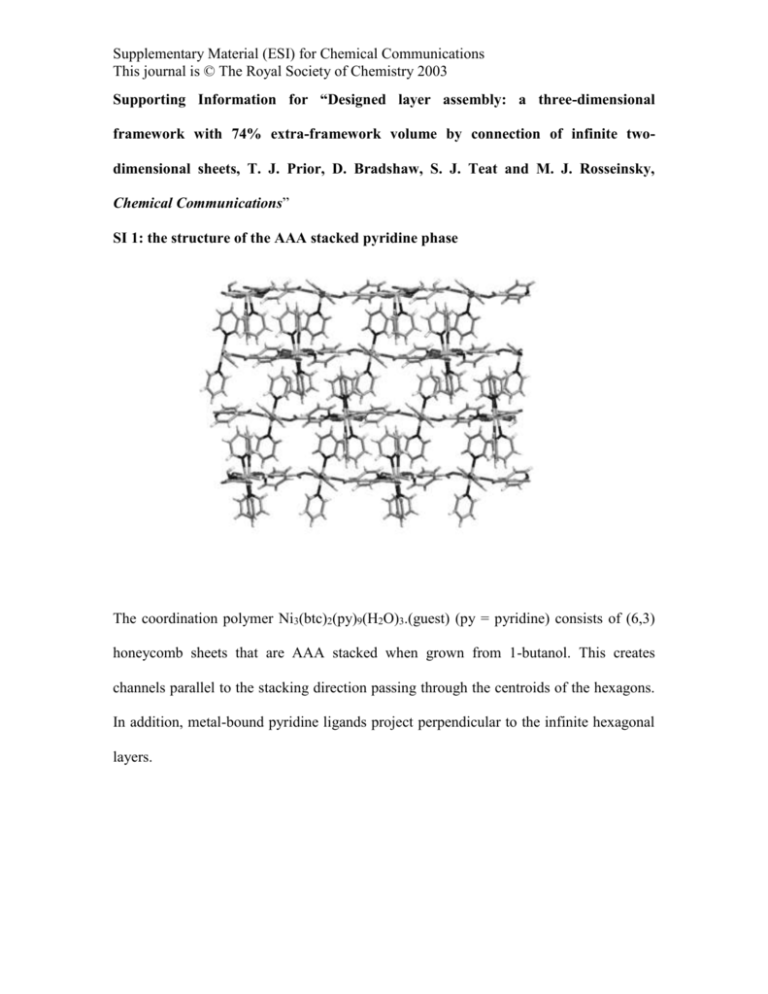
Supplementary Material (ESI) for Chemical Communications This journal is © The Royal Society of Chemistry 2003 Supporting Information for “Designed layer assembly: a three-dimensional framework with 74% extra-framework volume by connection of infinite twodimensional sheets, T. J. Prior, D. Bradshaw, S. J. Teat and M. J. Rosseinsky, Chemical Communications” SI 1: the structure of the AAA stacked pyridine phase The coordination polymer Ni3(btc)2(py)9(H2O)3.(guest) (py = pyridine) consists of (6,3) honeycomb sheets that are AAA stacked when grown from 1-butanol. This creates channels parallel to the stacking direction passing through the centroids of the hexagons. In addition, metal-bound pyridine ligands project perpendicular to the infinite hexagonal layers. Supplementary Material (ESI) for Chemical Communications This journal is © The Royal Society of Chemistry 2003 SI 2: asymmetric unit of 1 ORTEP representation of the structure of 1 refined in space group P3. Atoms are represented as 50% ellipsoids. Hydrogen atoms have been omitted for clarity. The water molecules O(2W), O(3W) and O(5W) each form two hydrogen bonds to the trans bound carboxylates, stabilising the coplanar arrangement of the btc moieties. The btc rings themselves are tilted - for example, btc C(11)-C(16) by 4.6° - to maximise these interactions at each metal centre, giving rise to a rippling of the (6,3) sheet. Supplementary Material (ESI) for Chemical Communications This journal is © The Royal Society of Chemistry 2003 SI 3: structure of phase 2 The structure of phase 2 [Ni3(btc)2(bipy)3(C2H6O2)3(H2O)3.(guest)], is identical to that obtained for 1, differing only in the solvent ligated to the Ni centres: in 1 this metalbound solvent is methanol and water and in 2 this solvent is ethylene glycol and water. Below is a representation of the structure of 2 showing the van der Waals surfaces of the channels (cf. figure 2 in the manuscript). View down a showing channels defined by the bipy pillars and the view down c showing the channels which run parallel to the stacking direction. Supplementary Material (ESI) for Chemical Communications This journal is © The Royal Society of Chemistry 2003 SI 4: thermal stability of phase 2 SI 4.1: TGA data The TGA trace for 2 shows a single sharp mass loss of ~ 60% between RT and 100°C, corresponding to all of the guest molecules (18 eg and 10 H2O molecules) and the metal bound solvent. SI 4.2: PXRD Upon heating to 120°C, removing both the channel and the metal-bound solvent, the PXRD pattern indicates a conversion from the highly crystalline pristine material to an Supplementary Material (ESI) for Chemical Communications This journal is © The Royal Society of Chemistry 2003 almost amorphous phase. Only a weak feature at 2θ ≈ 8°, which may correspond to the 0 0 1 reflection, remains. The sharp upper pattern is for the pristine material, which can be fully indexed with the subcell with no impurities present, indicating that the observed crystal structure is representative of the bulk material. The lower pattern represents the desolvated material.
